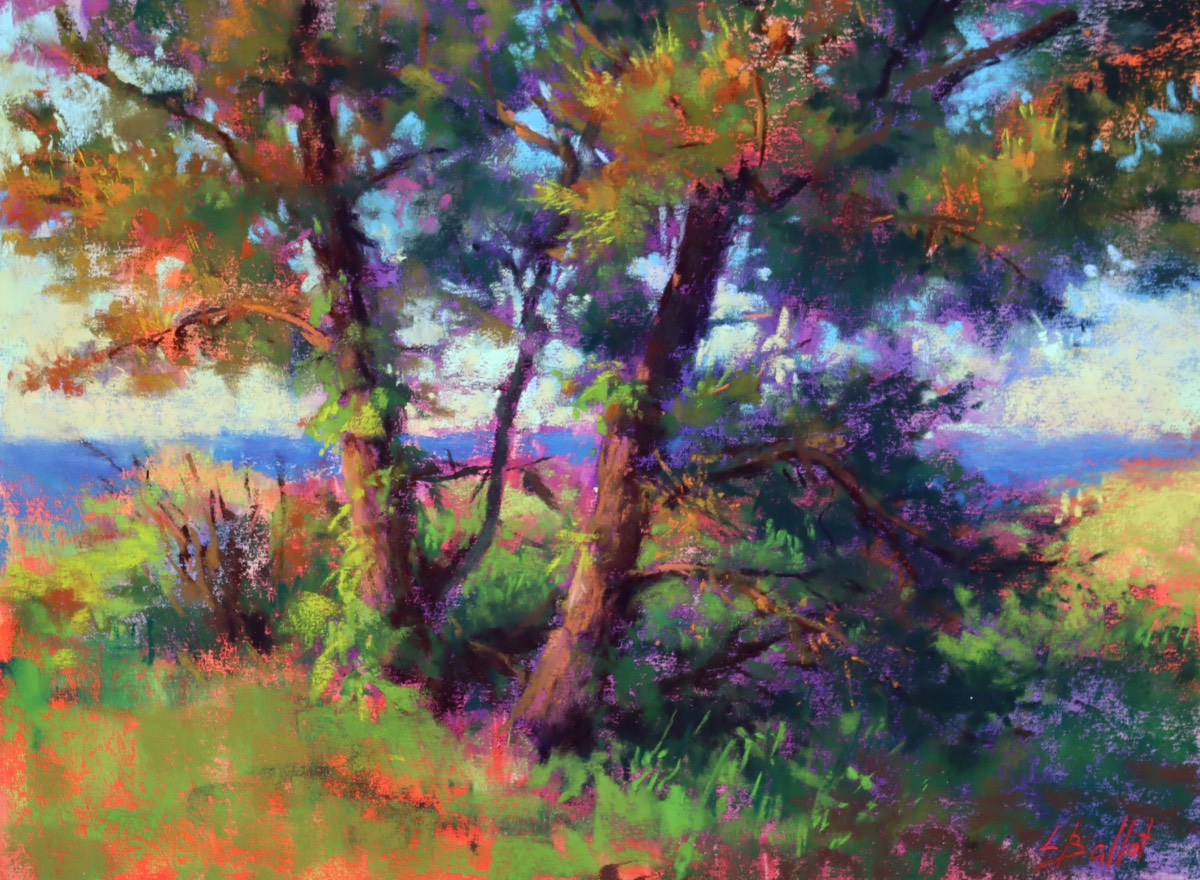
“I grew up in Russia, admiring Russian classical realist painters,” says Lana Ballot. “Later I fell in love with the work of French Impressionists. I still have a passion for both, and I’m trying to find a balance between the two styles in my own work. Expressive color in my paintings is based on deep observation of subtle nuances of light and color in nature.

“Even though there is a certain logic in my color choices, my decisions are ultimately intuitive, based on whether my aim is to capture the light and feeling of a place, the time of day, or the season. Light is never the same; color is never the same. I try not to approach color with a preconceived idea about what it should be. I rely on what I see, particularly when I paint en plein air, and that often leads to bold and unexpected choices. I find that pastel encourages a more direct and spontaneous approach to color. Lately, I’m increasingly intrigued by achieving a sketchier and looser look.

“Pastel is a medium that spans both drawing and painting and, to me, that makes it particularly beautiful and alive. Pastel works that speak to me the most have some of the spontaneity and intimacy of drawing; they reveal the presence of an artist in the scene. I want my paintings to have the same qualities.

“I do a lot of my current work in the studio, but when I first turned to landscape painting, I mostly worked on location. It’s not that I was a plein air purist, but that was the time just before the digital camera made taking good photos easier. And if I wanted to capture true light and colors of a place, working from small printed photos with distorted colors was out of the question.

“Pastel happened to be just what I needed on location. I had to work fast, make quick decisions about color, and simplify. Painting en plein air with pastels enriched my color vocabulary, made me look closer at my subject, paint looser, and focus only on the essential elements in a scene. I also credit pastels for making me pay more attention to values; in this medium there’s no getting around it if I want to avoid muddy or chalky colors.

“Now I paint outdoors as much as my schedule allows, which helps me keep my color fresh. These days, I find that I prefer leaving the plein air work as it is, unfinished. The painting process changes so much from plein air to studio that it’s hard to finish the work on the same note. Most of my plein air pieces serve as reference for studio work, directly or just as color reference, but occasionally I do touch them up and get away with it.”
Learn from some of today’s most amazing pastel landscape painters, including Peter Adams, Greg Barnes, Aaron Schuerr, and Jill Stefani Wagner at Pastel Live in August!



